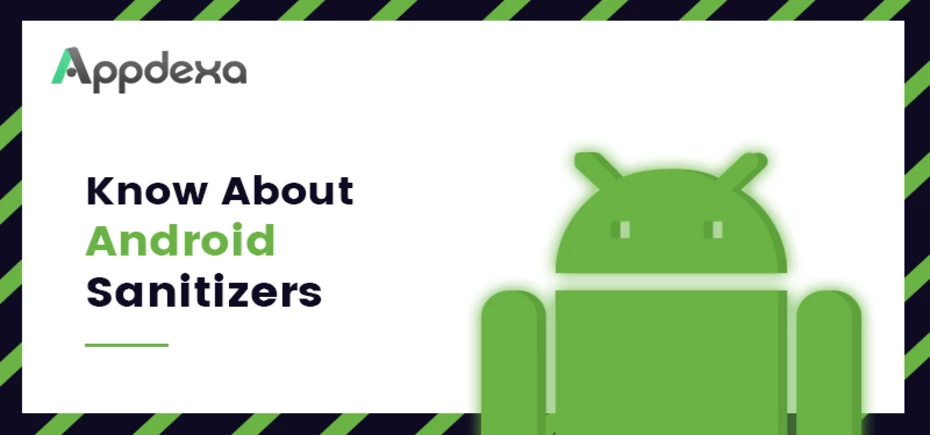
Partner Article
Developers Blog Insight: Know About Android Sanitizers
For Android app developers, the development ecosystem offers a number of components among which Android sanitizers are one most important. Other important components that are also used frequently are AddressSanitizers, SanitizerCoverage, and UndefinedBehaviourSanitizer. Being compiler based sanitizer, these components are exceptional to use for testing and development purposes in order to clean out the bugs. This helps make Android ecosystem work in a much better manner.
The Android has presently got the support of sanitizers that are exceptional to be used for diagnosing memory bugs. This write-up will talk about the above-mentioned Android sanitizers in detail to give the actual impression on how these elements work. Keep on reading to know how these systems can be used to empower the Android build up system.
AddressSanitizer
Being a compiler based component, AddressSanitizer (ASan) is a tool to perfectly detect the runtime of different types of memory errors in C and C++ code. In Android, following classes of memory have been tested:
Out-of-bounds accesses to heap, stack, and globals Use-after-free Use-after-return (runtime flagASAN_OPTIONS=detect_stack_use_after_return=1) Use-after-scope (clang flag -fsanitize-address-use-after-scope) Double-free, invalid free AddressSanitizer has got support from two high-level components. One includes memory-related functional calls, such as alloca, malloc, and free that have information in order to track memory allocation, and usage statics. This helps (ASan) to identify memory usages bugs such as use-after scope, free, return as well as double-free. ASan makes use of shadow memory to identify which memory type is completely poisoned or completely normal.
AddressSanitizer
UndefinedBehaviourSanitizer or UBSan UndefinedBehaviourSanitizer or UBSan is used to check different types of undefined behavior. In case, device manufacturers wish to include the same in their test builds, they can do it through LOCAL_SANITIZE:=default-ub in their makefiles or default-ub: true in the sanitize block of blueprint files. While UndefinedBehaviourSanitizer or UBSan has been designed specifically for identifying undefined behaviors, the Android originally supports:
bool Integer-divide-by-zero Return Returns-nonnull-attribute Shift-exponent Unreachable Vla-bound The Android build system also uses UBSan’s integer overflow checking. The instrument also provides support to unsigned-integer-overflow. This is not a technically undefined behavior but it is still counted in the sanitizer. They can easily be included in makefiles by arranging the setting LOCAL_SANITIZE in order to signed-integer-overflow, unsigned-integer-overflow, or the combination flag integer. This setting enables the setting: signed-integer-overflow, unsigned-integer-overflow, integer-divided-by-zero, shift-exponent and shift-base. The setting can also be enabled in blueprint files by enabling Misc_undefines to the required flag.
SanitizerCoverage
With SanitizerCoverage, the code coverage can be used at different levels including call level, basic block level or edge level. These codes can be used alone or in conjunction with the Android sanitizers like UndefinedBehaviourSanitizer i.e. UBSan and AddressSanitizer. Additionally, in order to use the guard-based coverage, the settings can be set as fsanitize-coverage=trace-pc-guard. This initiates the compiler to embed the setting as: sanitizer_cov_trace_pc_guard(&guard_variable) on particular edge. Each edge has its own uint32_t guard_variable. In addition, a module constructor, __sanitizer_cov_trace_pc_guard_init(uint32_t* start, uint32_t* stop) is also generated. All the _sanitizer_cov functions are important to be provided by the user.
In addition to this, SanitizerCoverage can also be used for data coverage. The activation goes with fsanitize-coverage=trace-cmp and the changes are implemented with _sanitizer_cov_trace* functions. The given functionalities are similar for integer division and GEP instructions activated with fsanitize-coverage=trace-div and fsanitize-coverage=trace-gep respectively.
Additionally, there are two different files namely .sancov file, and a sancov.map file wherein the information is recorded during a coverage sanitizer session. .sancov file has all the information related to instrumented points in the program and the second file has execution trace that is represented as a sequence in the first file. And, the default setting of these files is the current working directory.
This Article is Originally Published here.
This was posted in Bdaily's Members' News section by Appdexa .








 Creating a thriving North East construction sector
Creating a thriving North East construction sector
 Why investors are still backing the North East
Why investors are still backing the North East
 Time to stop risking Britain’s family businesses
Time to stop risking Britain’s family businesses
 A year of growth, collaboration and impact
A year of growth, collaboration and impact
 2000 reasons for North East business positivity
2000 reasons for North East business positivity
 How to make your growth strategy deliver in 2026
How to make your growth strategy deliver in 2026
 Powering a new wave of regional screen indies
Powering a new wave of regional screen indies
 A new year and a new outlook for property scene
A new year and a new outlook for property scene
 Zero per cent - but maximum brand exposure
Zero per cent - but maximum brand exposure
 We don’t talk about money stress enough
We don’t talk about money stress enough
 A year of resilience, growth and collaboration
A year of resilience, growth and collaboration
 Apprenticeships: Lower standards risk safety
Apprenticeships: Lower standards risk safety